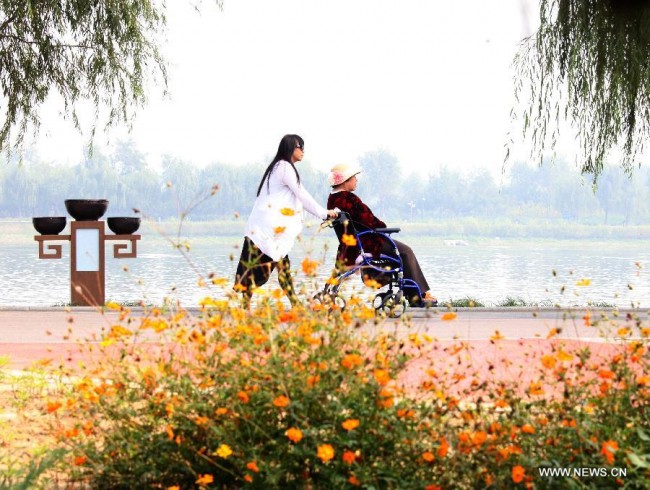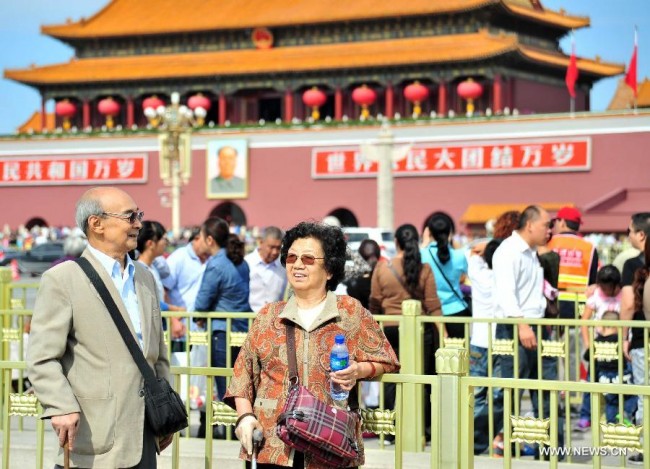Market research: Tourism Market for the Elderly in China
Market research: Tourism Market for the Elderly in China
Since China is gradually entered the aging society, more and more attention has been paid to the elderly market share in various industries, including the tourism. Nowadays, whether online travel products sales websites or offline travel agencies have launched special tourism plans for the elderly. Our focus is on tourism market for the elderly in China.
Elderly segment is growing in China
Tourism for the elderly in China is indeed a market that cannot be ignored. In China, the number of elderly people proportion is rising year by year, and the scale of elderly people is quite large. According to 2010 census data, the total population for mainland China was 1.34 billion. Among them, the population aged 60 and over was 178 million, accounting for 13.26%. This means the population aged 60 and over increased by 2.93 percent, while the proportion of the population aged 0-14 fell 6.29 percent, compared with the fifth national census in 2000. The problem of aging is highlighted. According to market research in China, the annual average growth rate of the number of China’s population was 0.57%, from 2000 to 2010. Assuming growth rates remain unchanged, in 2020; the population aged 60 and over will reach 230 million, accounting for 16.19%.
In addition, the elderly have a certain level of consumption. According to the market report of Research Center on Aging, in 2010, China’s urban pension insurance total expenditure was 1.0555 trillion yuan. In the same year, the town population was 666 million.

Tourism market for the elderly in China is risky?
The development of tourism market for the elderly is also facing many constraints. In fact, lots of market research agencies think the tourism market for elderly people in China is more risky than profitable. The biggest threat is the physical condition of the elderly. Many insurance companies will not accept travel insurance for people who are 75 years (80 years in some places specified) or older. This leads directly many agencies to think the elderly tours as high risk and to limit the tourists’ age.
Secondly, most Chinese elderly tourists are price sensitive. In 2010, the average monthly income of the elderly in urban China was 999.5 yuan. It is not enough to save a part which can be used for travel expenses. Naturally, elderly people will scrimp on the tourism.
The above two points are the main causes of failure of the tourism market for the elderly. According to market research in China, on domestic tourism sample survey, 65 years and older accounted for 6.3% of the number of trips, and accounted for 5.07% in total domestic tourism consumption. Compared with the European travel market, the number was quite low. European elderly tourists accounted for 33% of the total tourism market.
Furthermore, there is some problematic practices in the tourism market for the elderly in China: taking advantage of free travel to lead the elderly to buy expensive health care products, giving low price tours at the beginning and asking for much higher on the road, and so on. As the “2008 National Tourism complaints Bulletin” issued by National Tourism Administration shows, the elderly become a hot tourist complaints group.
How to develop the tourism market for the elderly in China?
There is several points which can support the development of tourism market for the elderly in China and contribute to extend the target of tourists in China.
The first is sound regulatory and supervisory of government. In recent years, the Chinese government got down to regulate the tourism market norms. This is the basic criteria to help to regulate the tourism market for elderly effectively and to avoid the usage of risky practices.
Secondly, more relevant supporting insurances are required. Insurance companies can take advantage of the growing tourism market for the elderly in China to develop more aging product segments.
Finally, tourism agencies should take full account of the needs and characteristics of the elderly tourism, and design tourism products under the guides of elderly market segments. Compared with young people, most elderly has the following characteristics: slow, limited energy, focus on health care… Thus, the elderly tourism market can be segmented by age, income, travel mode, travel distance and aim.
See more:
http://www.crca.cn/index.jsp















